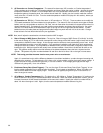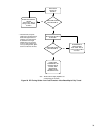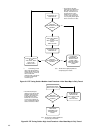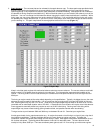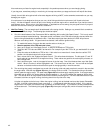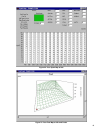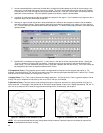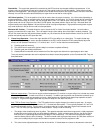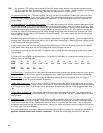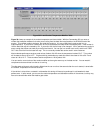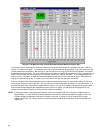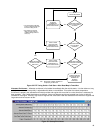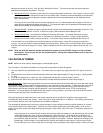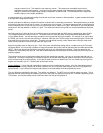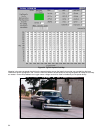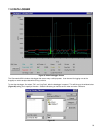
46
TIP: As a guideline a TPS position that is between 2/3 and 3/4 throttle usually works fine for naturally aspirated engines.
This is an important value, but does not need to be exact down to 5 or 10 numbers. A supercharged or turbocharged
engine will have this value set much lower. Normally, this value should be 17-25% of WOT.
O
2
Compensation Step Size – This table specifies how much fuel the ECU will take out or add to the current volume on
each step in an attempt to bring the air/fuel ratio to ideal. The base settings that ramp from 1 to 3 as the rpm increases
are usually ideal. Increasing the low rpm settings from more than 1 or 2 will usually cause the ECU to “overshoot” the
correct setting.
Seconds between O
2
Compensation Step changes – This table sets the amount of time the processor waits before further
adjusting the fueling amount. This is commonly referred to as the transport delay. After a fuel change is made, the new
amount must travel to the cylinder on the intake stroke, be compressed, ignited by the spark, push the piston down, leave
through the exhaust valve, travel down the exhaust tube, and be sensed by the O
2
sensor. If the values in this table are
too small, the ECU will not be allowing the new fueling changes enough time to be sensed by the O
2
sensor and would
then be making changes based on old information, not new information. If the values are too big, the ECU will take too
long to settle on a change.
Most base map values are based on the O
2
sensor being in the collector in long tube headers. It is best to experiment by
lowering these values and monitoring the effect on the oxygen sensor voltage output. Obtaining the best numbers results
in the smoothest idle and cruise speeds.
If these values are too low, it is likely that surging will be present when the vehicle is operating closed loop at a specific
RPM. Modify these values when the vehicle is being driven at the RPM point you are at.
If the values are too high, you will see that the voltage from the O
2
sensor will not be changing frequently during closed
loop operation.
If the sensor is in the collector, try the base values. For sensors mounted about 10 inches from the exhaust port, try the
following values as a starting point:
Value .56 .38 .32 .31 .3 .29 .28 .24 .22 .21 .18 .15
RPM 600 800 1000 1200 1400 1600 1800 2000 2200 2400 2600 2800
Value .14 .13 .12 .11
RPM 3000 3200 3400 3600
Cold Start Delay – The amount of time the system will wait before entering closed loop operation when the engine is cold.
This should be about 180 seconds. It also must meet all the other closed loop parameters before entering closed loop.
Hot Start Delay – The amount of time the engine will wait before entering closed loop operation when the engine is
restarted while still hot. This should be about 30 seconds.
RPM to Enter Closed Loop – Any rpm above this point will activate closed loop. If your engine idles at 800 rpm and you
want to idle closed loop, then set this number to 500-700 rpm. If you have an engine that does not like to idle closed loop,
or the oxygen sensor does not get enough heat at idle because of its placement, set this number to approximately 1500
rpm.
RPM to Return to Open Loop – If the rpm falls below this point, open loop operation will occur. This setting should be
about 100 rpm below the rpm to enter closed loop. This is so that the ECU doesn’t not “hunt “ between open and closed
loop operation.
6. Cold Start Tuning - The first area that will likely need tuning will be cold-start enrichment. The base maps should be
fairly close for mild performance engines. Engines with large camshafts may need large increases in this area however.
There are two areas that are very important and need to be tuned in conjunction with each other. They are the coolant
temperature enrichment and the afterstart enrichment. We will first explain and tune the coolant temperature enrichment.
It is found under “Fuel” and “Modifiers”.
The coolant temperature enrichment is extra fuel that is added to the engine as it warms up to operating temperature. It
performs the same function as a choke on a carburetor. The lower the coolant temp, the more fuel it will need.



